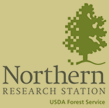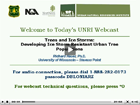January 2011 – Planning for Street Tree Planting
Webcast Resources:
“Planning for a New Approach to Street Tree Planting“
Wednesday, January 19th, 2011, 1:00 PM (Eastern)
featuring Stan Kochanoff, M.S., President, Environova Planning Group,Falmouth, Nova Scotia
» Watch the video
» Find supporting material
» Discuss this webcast
» Take the ISA CEU Quiz
You can view this month’s webcast below using the embedded video viewer. Just click on Play and the video will start momentarily. Alternatively, you may download a copy to your own PC. Simply right-click on the provided link and save the presentation to your desktop or other appropriate directory. You can then open the file once it is downloaded and view it by using the default Windows Media Player software.
Click Here to download the file in Windows Media(WMV) format.
Supporting Material:
Contacts:
Stan Kochanoff, M.S.
Environova Planning Group Inc.
12 Currry Lane, Box 99, Falmouth, NS B0P1L0
Office Phone • 902 798-4798
Email • environ@eastlink.ca
Websites:
- Environova Planning Group Inc.
- Street Tree Planting Procedures – City of Seattle, WA
- Street Tree Planting Requirements for New Buildings – City of New York
Documents and Files:
- The Road to a Thoughtful Street Tree Master Plan (PDF Download)
- Tree Planting Standards – City of New York (PDF Download)
PowerPoint Presentations:
Other Resources:
- Tree Selection – US Forest Service, Northeastern Area
- Design Alternatives to Avoid Street Tree Conflicts
- Planting & Preservation of trees on Site Plan Projects – City of Alexandria, VA


